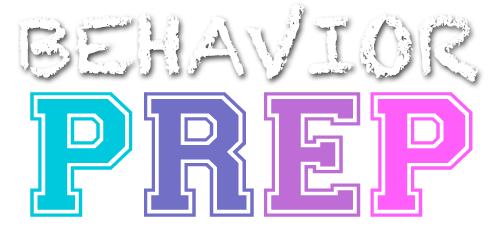.G17 Design and evaluate positive and negative punishment (eg. Time-out, response coast, overcorrection)
BCBAs use various punishment procedures, including positive and negative punishment, to decrease or suppress problem behavior. Here is detailed information on how a BCBA would use positive and negative punishment techniques, specifically time-out, response cost, and overcorrection, along with examples.
Time-Out
Time-out involves the temporary removal of an individual from a reinforcing environment contingent upon the occurrence of problem behavior. It aims to decrease the likelihood of problem behavior by reducing access to positive reinforcement.
Procedure:
- Identify a designated time-out area or a less reinforcing environment where the individual will be temporarily removed.
- Determine the duration of time-out based on the individual’s age and the severity of the behavior.
- Promptly remove the individual from the reinforcing environment immediately following the occurrence of the problem behavior.
- During time-out, restrict access to preferred activities, attention, or other sources of reinforcement.
- Monitor the individual during time-out to ensure their safety and prevent escape behavior.
- Release the individual from time-out after the predetermined duration and return them to the regular environment without providing additional attention or reinforcement.
Example: A BCBA is working with a child named Alex who engages in aggressive behaviors when his demands are not met. The BCBA implements time-out by promptly removing Alex from the reinforcing environment and placing him in a designated time-out area for a brief duration (e.g., 1-2 minutes). During time-out, Alex does not have access to preferred toys or attention. Once the time-out period is complete, Alex is calmly and quietly returned to the regular environment.
Response Cost
Response cost involves the removal or loss of a specific amount of reinforcement following the occurrence of problem behavior. It aims to decrease the occurrence of problem behavior by associating it with a loss of reinforcers.
Procedure:
- Identify a specific reinforcer that will be contingent upon the occurrence of problem behavior.
- Determine the amount or value of the reinforcer that will be removed following the problem behavior.
- Clearly communicate the response cost procedure and the rules for earning and losing reinforcers to the individual.
- Promptly remove the specified amount of reinforcement when the problem behavior occurs.
- Ensure that the individual has the opportunity to earn or regain the lost reinforcement by demonstrating appropriate behavior.
Example: A BCBA is working with a teenager named Lisa who frequently engages in disruptive behavior during class. The BCBA implements response cost by removing a predetermined number of points from Lisa’s token economy or reward system each time she engages in disruptive behavior. These points can be exchanged for preferred items or privileges. As Lisa earns points for appropriate behavior, she also has the opportunity to regain the points that were previously deducted.
Overcorrection
Overcorrection involves providing an individual with an opportunity to correct the consequences of their behavior by engaging in restitutional activities. It aims to decrease problem behavior by requiring the individual to engage in efforts to repair or restore the environment affected by their behavior.
Procedure:
- Identify appropriate restitutional activities that are relevant to the behavior and situation.
- Clearly communicate the expectations and requirements for the restitutional activities to the individual.
- Promptly prompt the individual to engage in the restitutional activities following the problem behavior.
- Ensure the restitutional activities are completed to an acceptable standard before providing access to preferred activities or reinforcers.
Example: A BCBA is working with a child named Michael who frequently throws toys when he becomes frustrated. The BCBA implements overcorrection by requiring Michael to clean up the toys he threw, apologize to his peers or caregivers for his behavior, and engage in additional helpful actions, such as organizing the play area or assisting others. Once Michael completes the restitutional activities to an acceptable standard, he is allowed to resume preferred activities.
It is essential to note that punishment procedures should be used cautiously, ethically, and with careful consideration of alternative strategies. BCBAs prioritize using positive reinforcement and teaching appropriate replacement behaviors whenever possible. Punishment procedures require ongoing monitoring and assessment of their effectiveness and potential side effects. A functional thorough evaluation should be conducted to understand the underlying function of the problem behavior and guide the selection of appropriate interventions.
